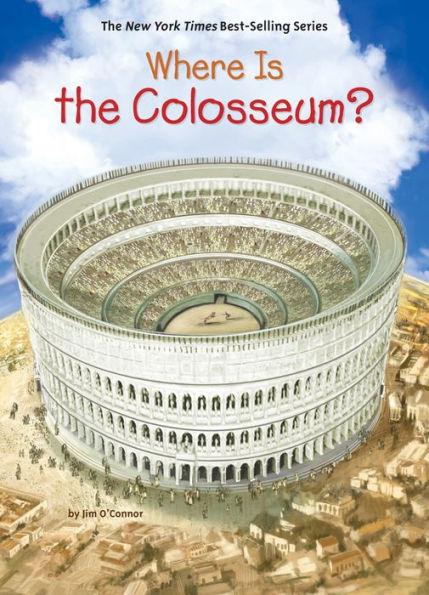Read an Excerpt
Where Is the Colosseum?
It is AD 80 and the streets of Rome are buzzing with excitement. The new emperor has promised one hundred days of games to celebrate the opening of an amphitheater that stands in the center of the city.
It is named the Flavian Amphitheater after the emperor’s family and is a marvel of engineering. It is huge, over 150 feet high, and will seat fifty thousand people. There are eighty entrances that quickly funnel spectators to their correct seats. There are snack bars, many water fountains, and even indoor bathrooms.
A massive canopy stretches over the open-air arena and provides shade for the crowd. It is operated by a team of one thousand sailors who can haul the canvas cloth canopy—a huge fabric roof—into position and adjust it as needed.
Today’s show begins with battles between men and wild animals. The animals—lions, tigers, bears, and elephants—have been brought from every corner of the Roman Empire. In the next hundred days, more than nine thousand animals will be slaughtered.
Later, at lunchtime, prisoners will be brought from jail to be torn apart by some of the animals or killed by soldiers. Although it is hard for us to understand, the crowds find this entertaining. The people of ancient Rome devoured this sort of spectacle—the bloodier the better.
The high point of the day comes in the afternoon—pairs of fighters called gladiators will fight each other with deadly weapons. People in the crowd root for whichever gladiator they want to win. They scream and cheer. Again, it is hard for us today to think of people killing each other as entertainment. But to the Romans, it was.
The grand opening of this huge arena marks a climax in the history of ancient Rome. The amphitheater is the largest ever built. Soon it will come to be called the Colosseum. Today, two thousand years later, it is a ruin. Yet it is still one of the most famous sites in all of Rome, in all of Italy. More than five million people visit every year to see a reminder of the bloody power of one of the world’s greatest empires.
Chapter 1: How Rome Began
By the time the Colosseum opened, the city of Rome was almost eight hundred years old.
According to legend, Rome was founded in 753 BC by Romulus. Romulus and his twin brother, Remus, were the children of a human woman and Mars, the Roman god of war. Their mother, Rhea, left her twins to die in the Tiber River. But the twins floated down the river and were saved by a she-wolf. The wolf took care of the babies in a nearby area with seven hills.
According to one legend, when they grew up, the twins wanted to build a city on one of the seven hills. But they could not agree on which hill. Neither twin would give in and there was a terrible fight. Romulus killed Remus.
Romulus built his city exactly where he wanted and named it Rome, after himself. The people who lived there came to be called Romans.
Over the next three hundred years, Rome grew so large that it covered all seven hills. It grew up along the banks of the shallow Tiber River.
Around 400 BC, Rome founded Ostia, a harbor city on the coast. From there Roman ships could sail to all the trading centers on the Mediterranean Sea. The Romans grew rich.
By 218 BC, Rome had conquered all of what is now the country of Italy. By AD 117, the Roman Empire stretched from Britain in the north through most of Europe and included all the land around the Mediterranean Sea. Countries that are today known as Turkey, Iraq, Iran, and Saudi Arabia were all part of the Roman Empire. The Romans brought their way of life to these conquered lands.
After every conquest, the victorious Roman general would return home and parade through the city, showing off the riches he’d taken as well as the many prisoners of war. The riches from conquered lands paid for massive building projects like the Colosseum.




